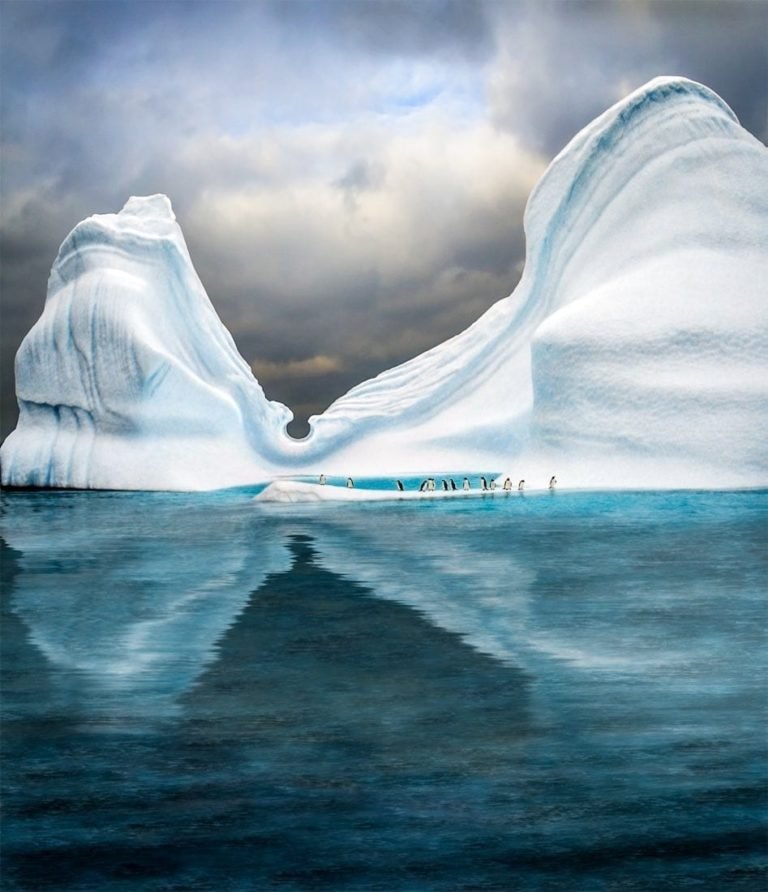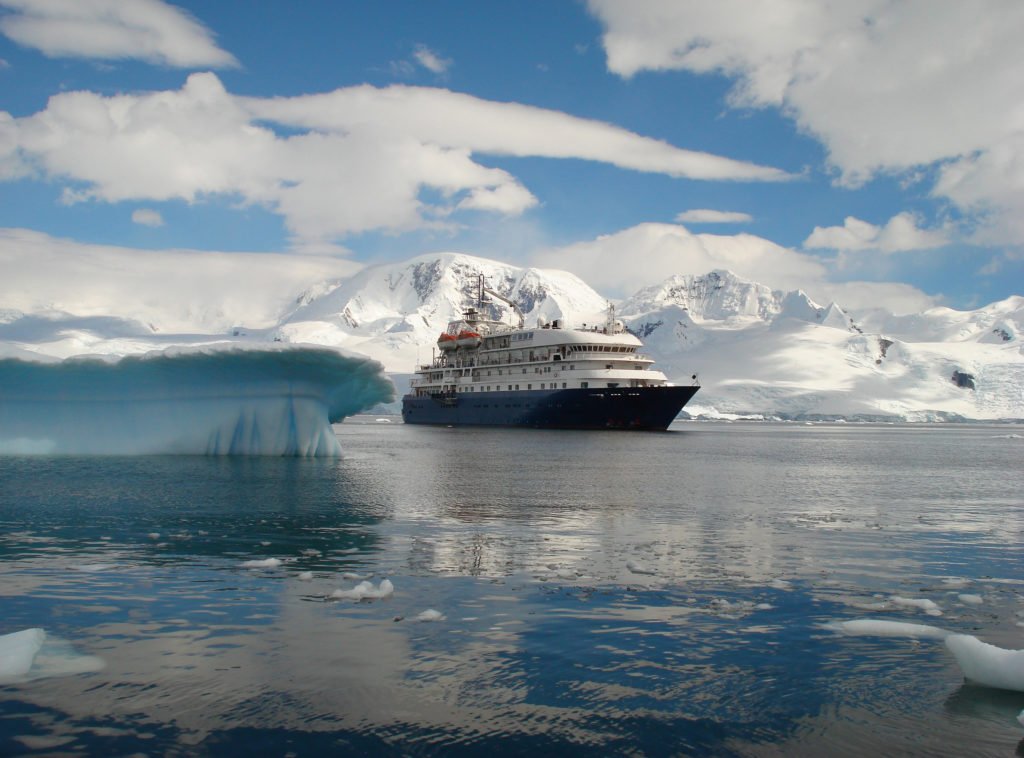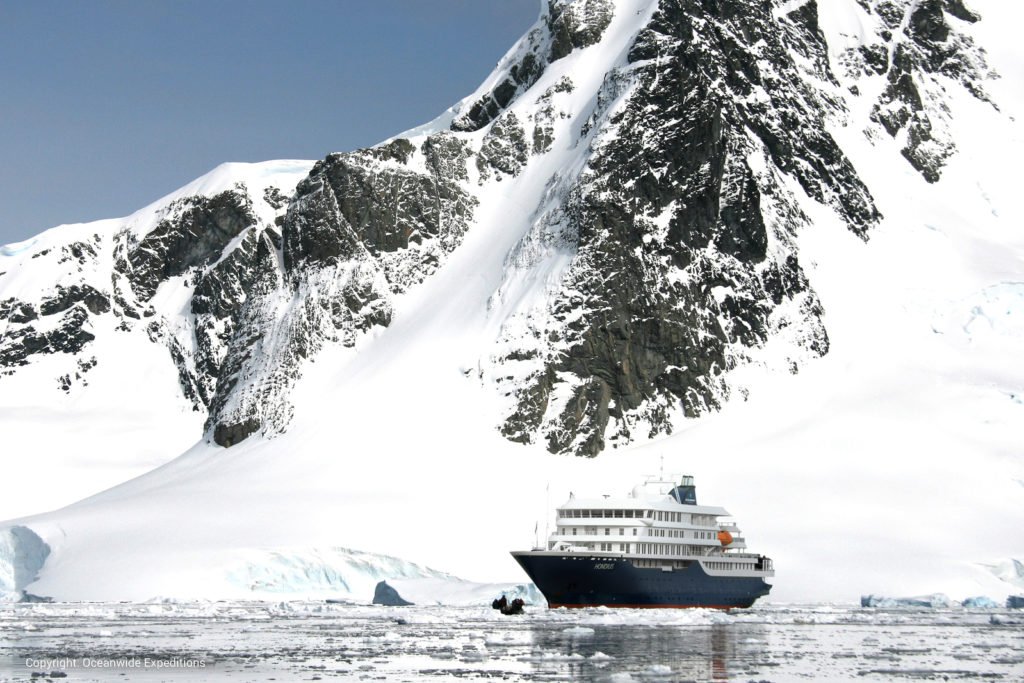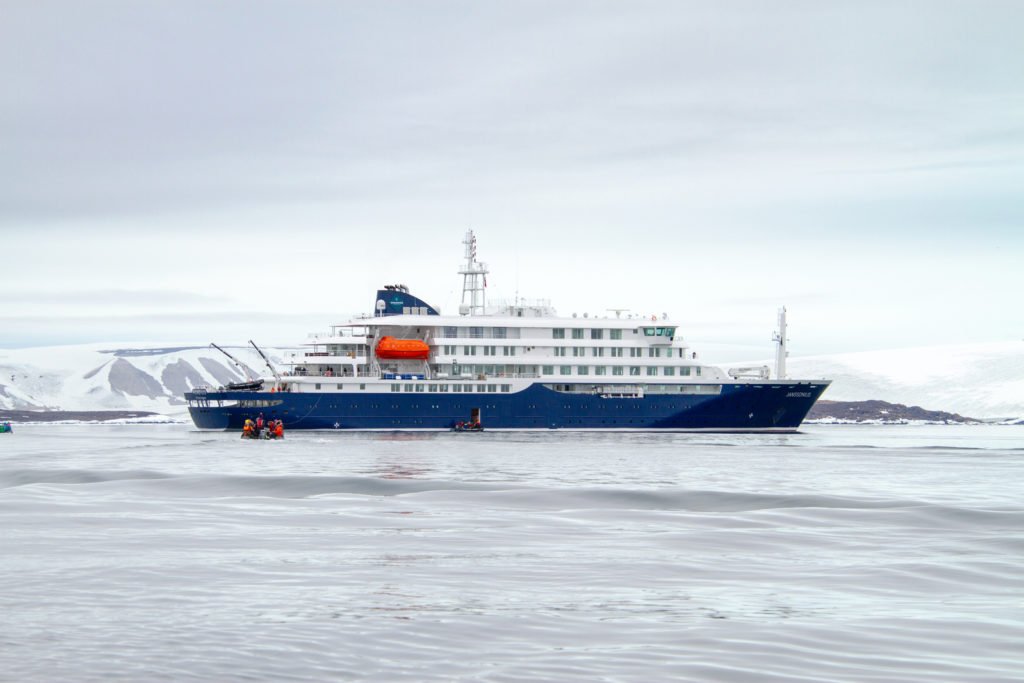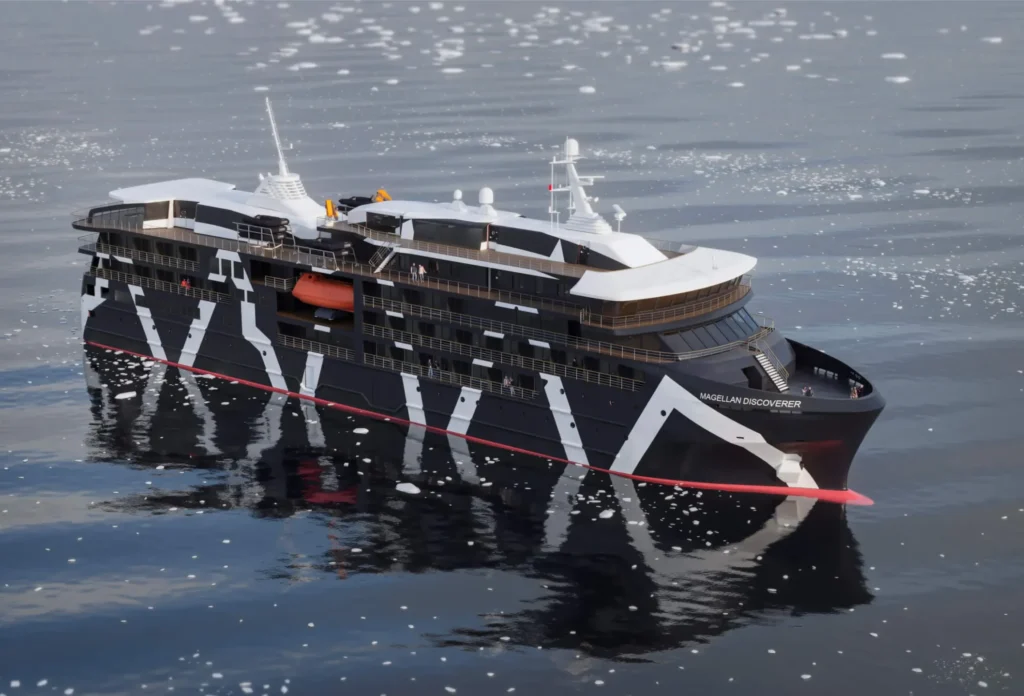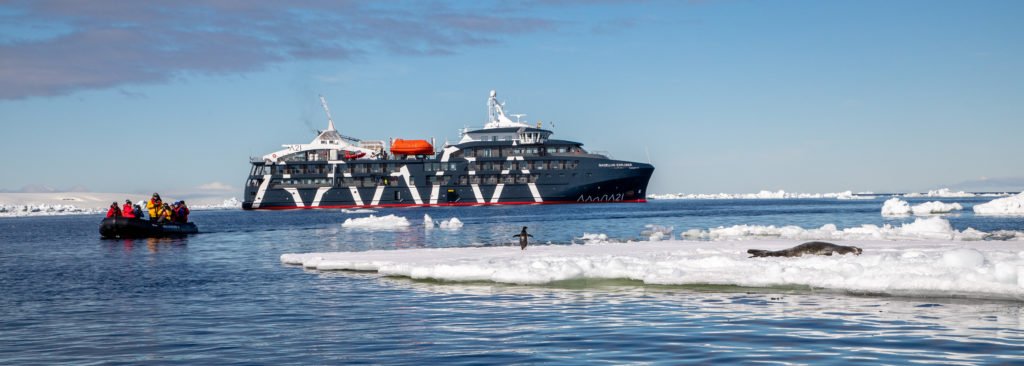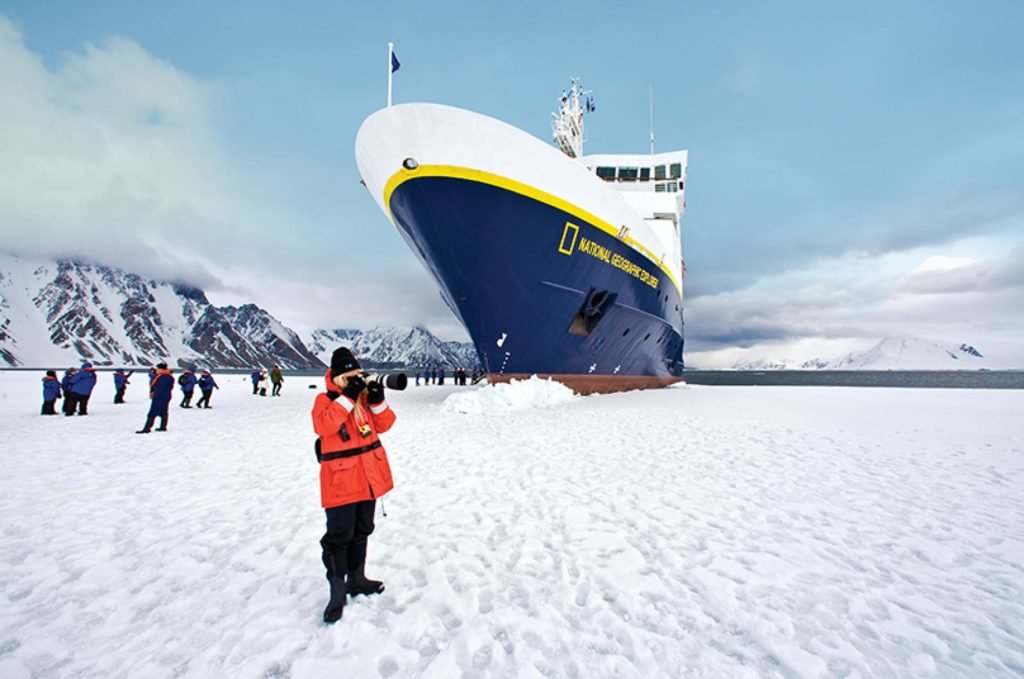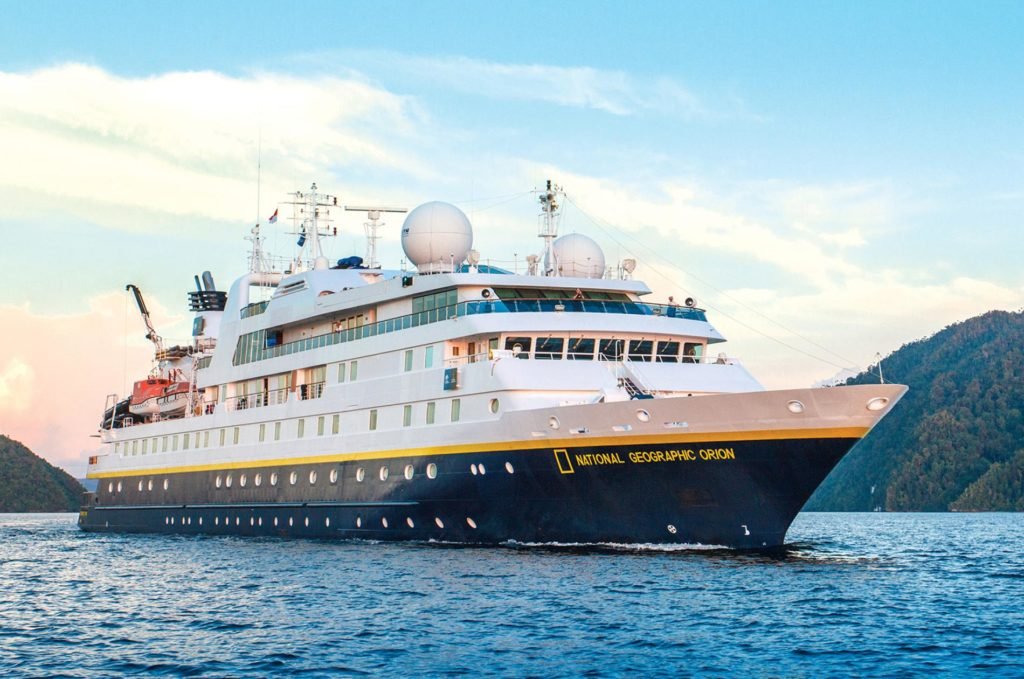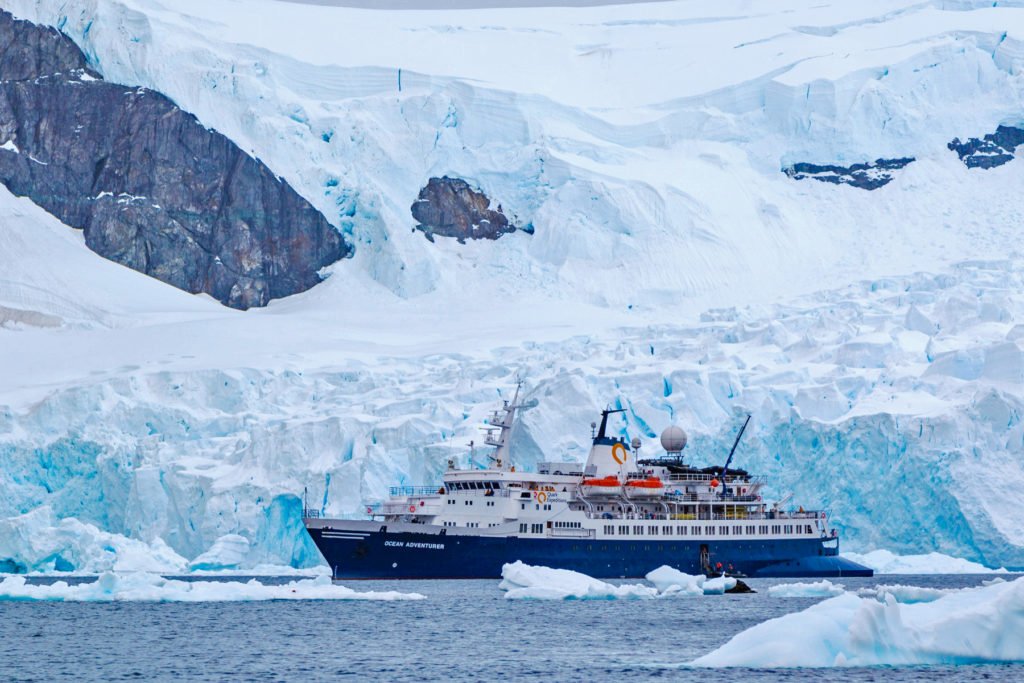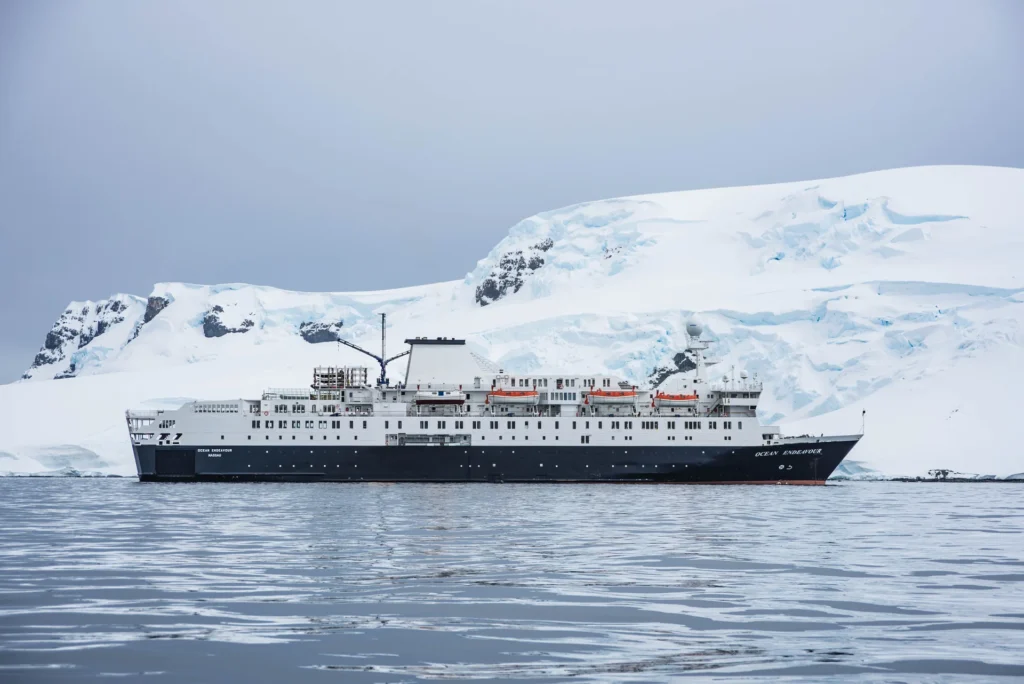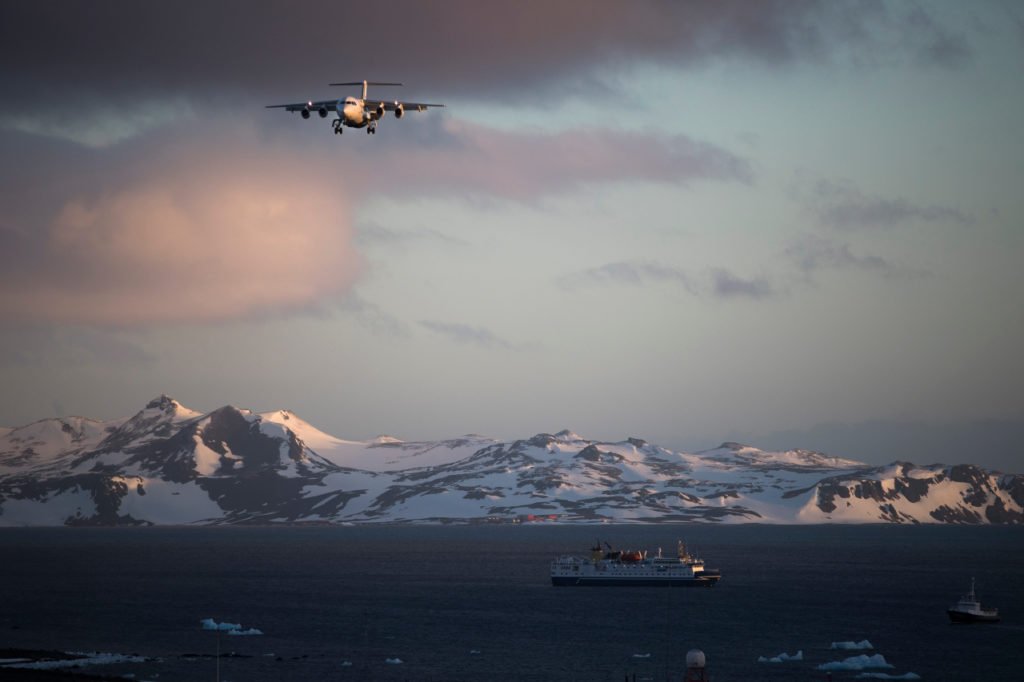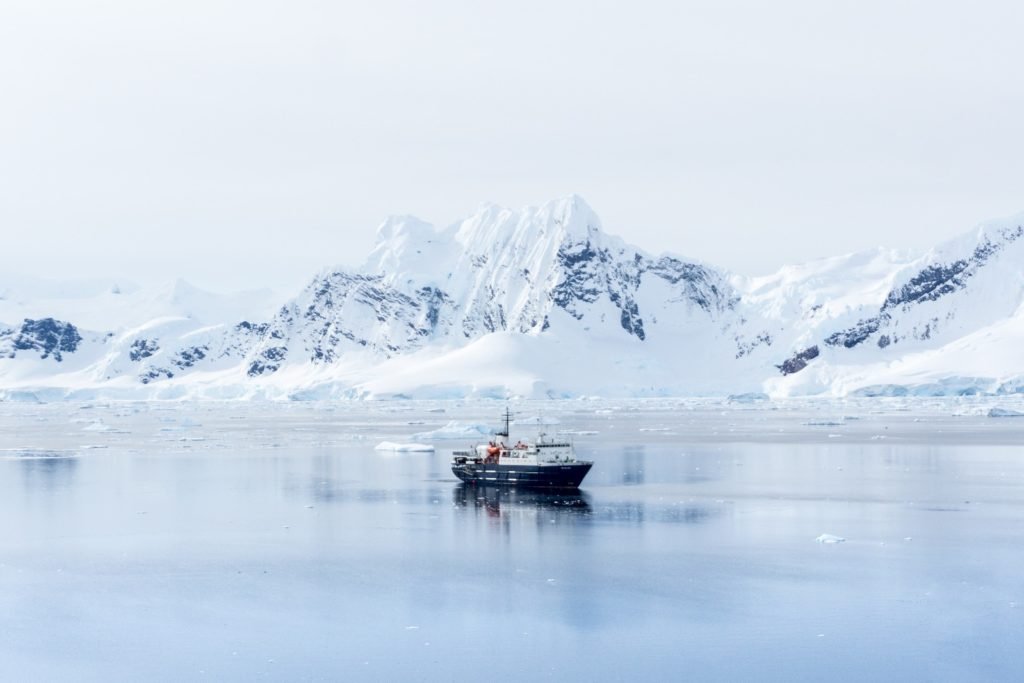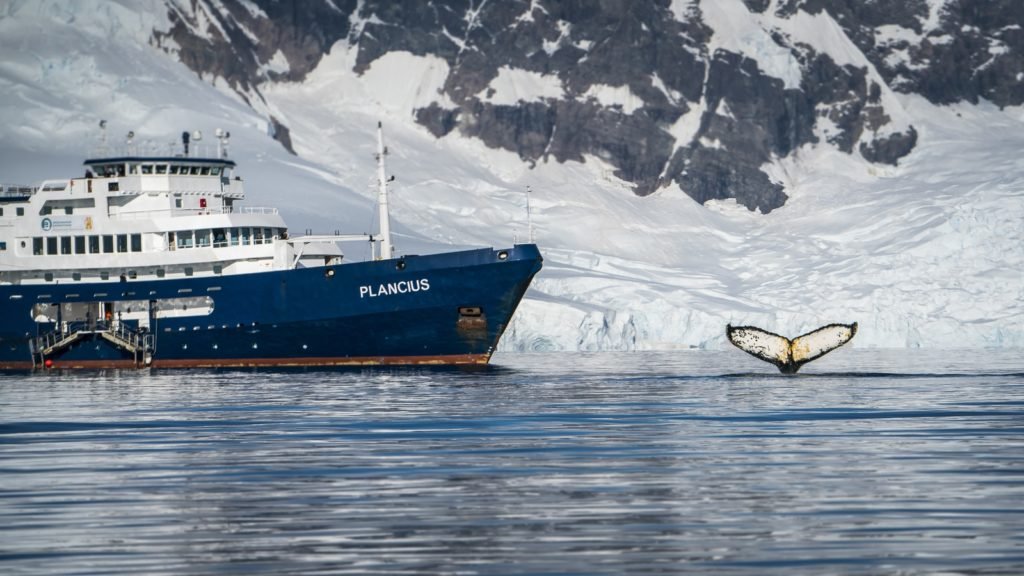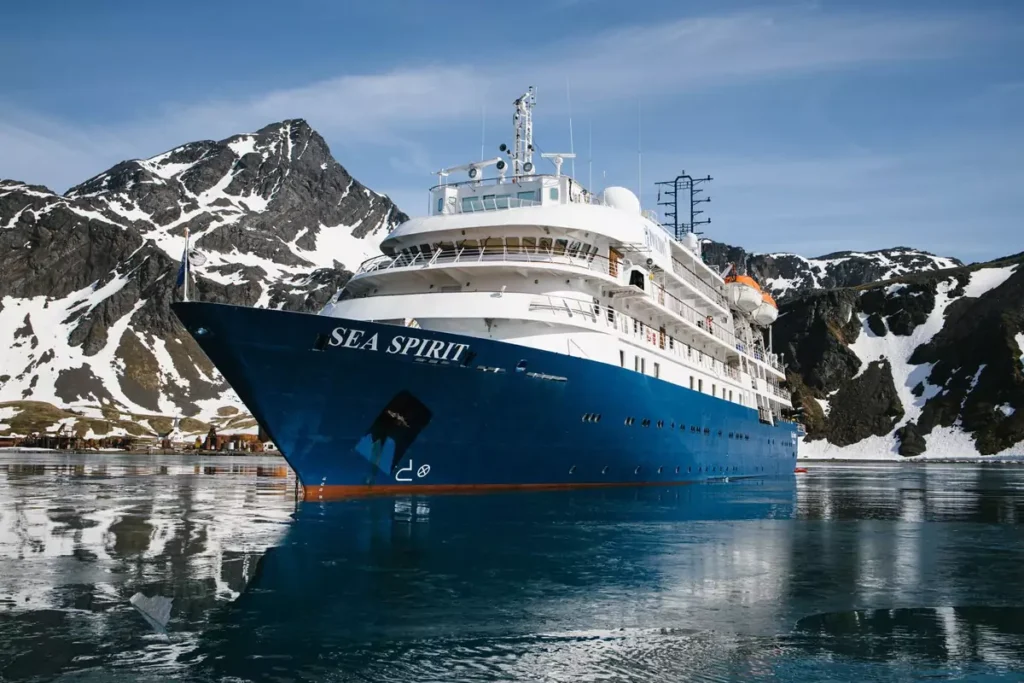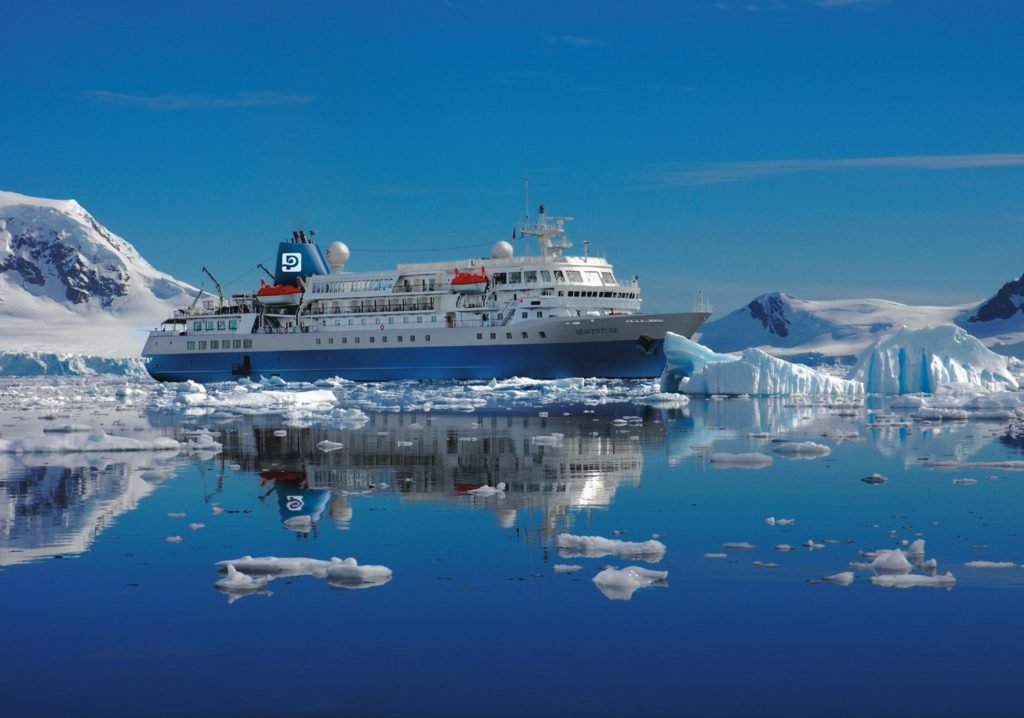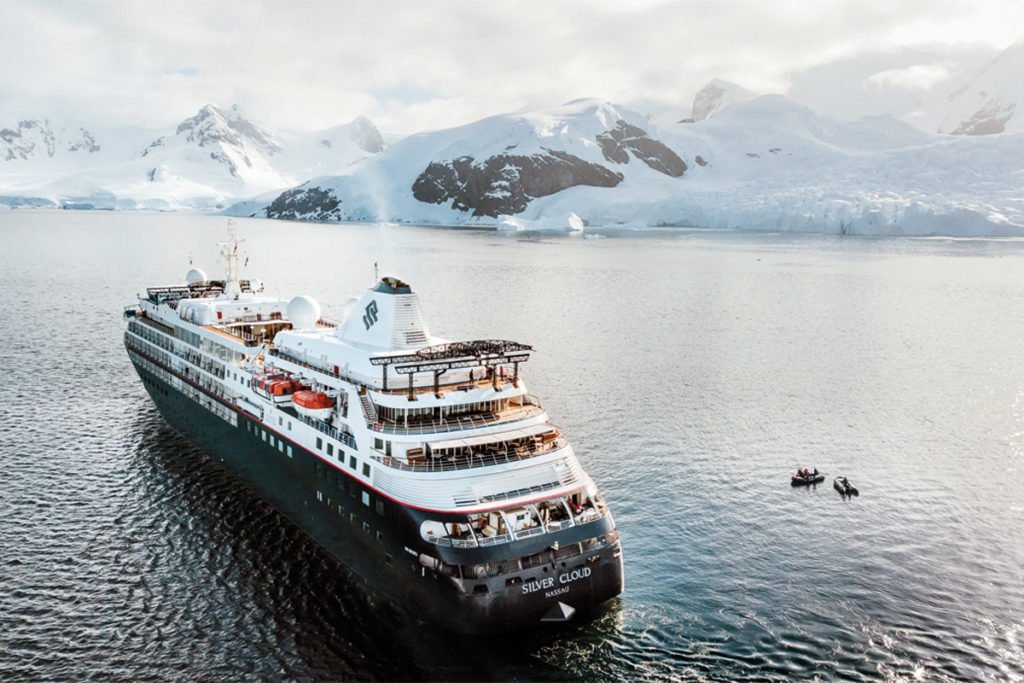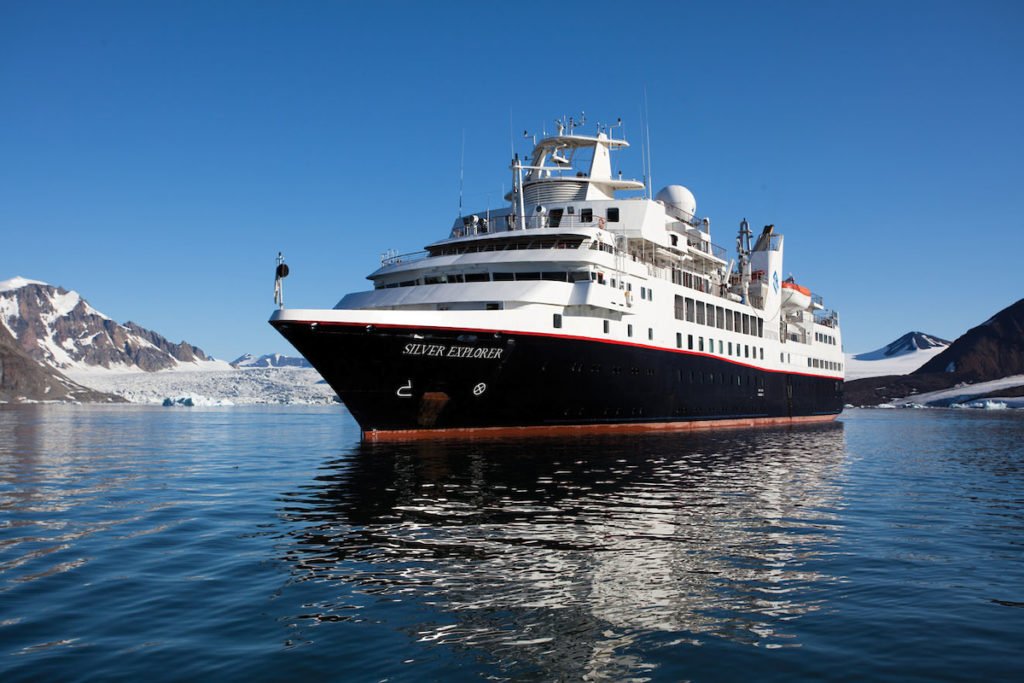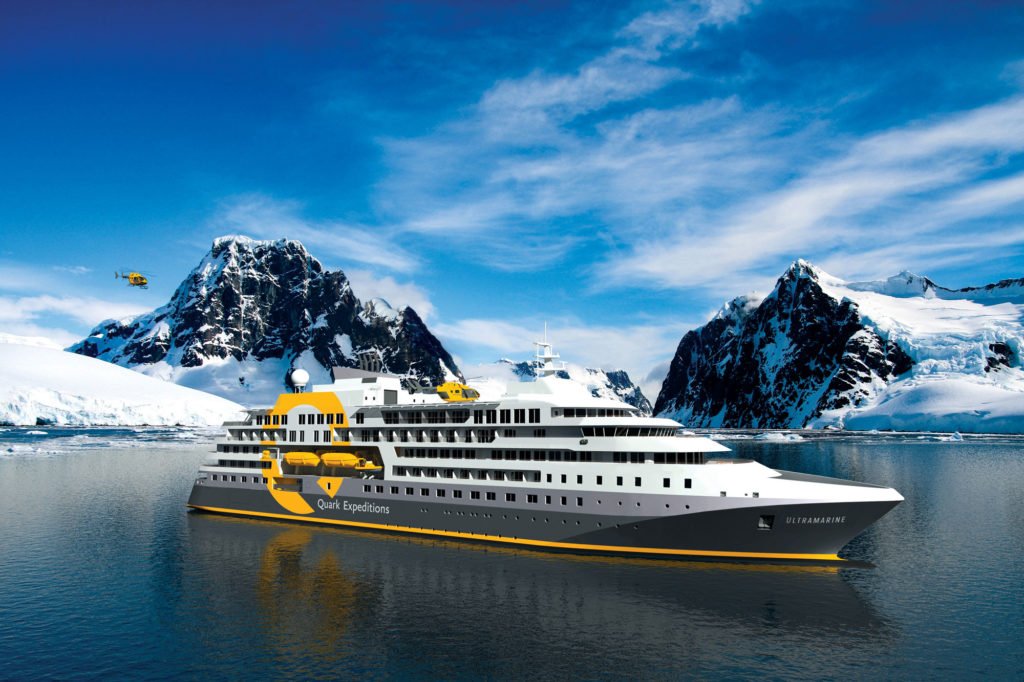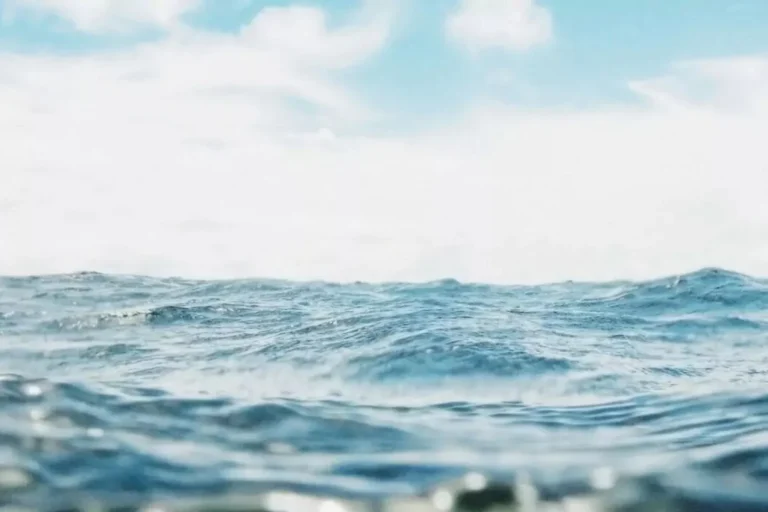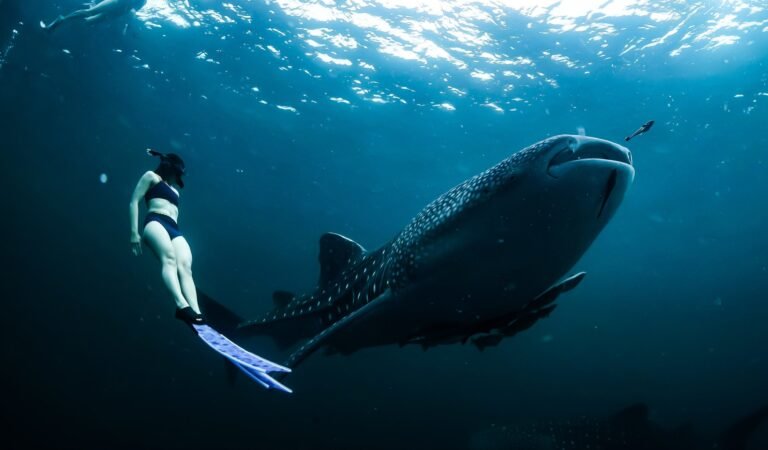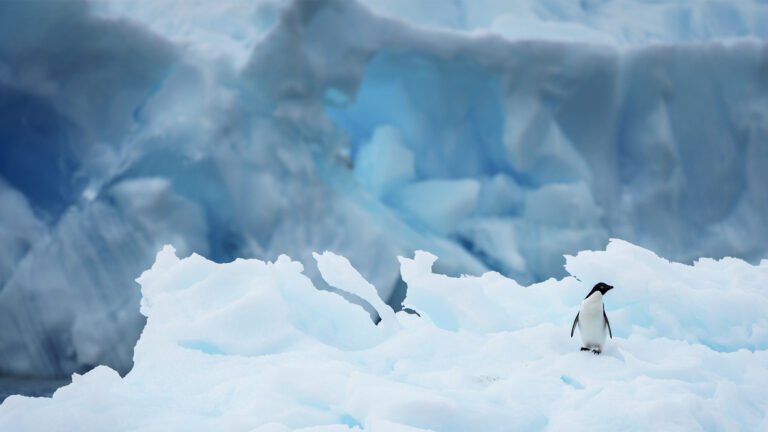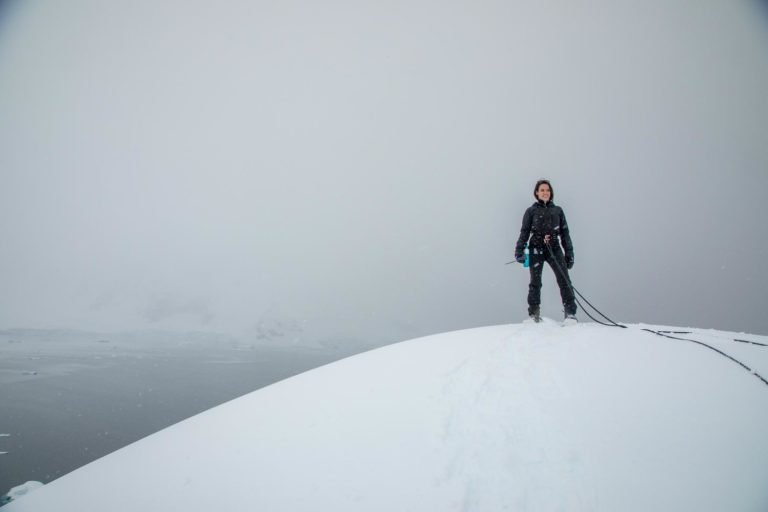Smile. You’ve LANDED in Antarctica.
As the southernmost continent in the world, Antarctica is a place of extremes: the driest, coldest, highest, brightest, windiest place on earth. It’s also a once-in-a-lifetime experience that will be the wildest and purest you’ve ever had while traveling.

AREA 5.4 MILLION SQUARE MILES
SEASON NOVEMBER TO MARCH
ANNUAL VISITORS UNDER 40,000
ALTITUDE AT SOUTH POLE 9000 FEET ABOVE SEA LEVEL
VISITOR ARRIVALS FROM SOUTH AMERICA 98 PERCENT
PORTION OF EARTH’S FRESH WATER IN ANTARCTIC ICE 90 PERCENT
TREATY NATIONS 53
Start your journey today
Speak with one of our travel designers and let us create a tailored itinerary for you in Antarctica.
Why We Love Antarctica
Adventures Awaiting You in Antarctica
Witness a living canvas of light as you travel through the frontier of Antarctica. With ancient ice floes, jagged cliffs, and awe-inspiring glaciers, you can see the white terrain transform with blues, purples, reds, oranges, and pinks as the sun rises and sets.
Experience the camaraderie and anticipation of sailing through the Drake, a literal rite of passage that will connect you to explorers from long ago as you follow their path. Alternatively, by-pass the 50 hour cruise with an air-cruise, allowing you to witness the beauty of the Drake from the air.
What to do in Antarctica
With planning, your options of “what to do in Antarctica” expand. From abseiling to zodiac tours, opportunities for things to do in Antarctica are diverse. Some activities, such as the Antarctic Zodiac cruises and wildlife tours are included with most departures but some carry an additional cost. Slots for these activities are limited and booked months in advance.
Wondering what to do in Antarctica? Take a look at our list of can’t-miss activities that will make your vacation unforgettable.
Travel Insurance
We’ve said it again and again: travel in Antarctica involves inherent uncertainty. Travel insurance isn’t just nice to have for Antarctica–it’s a requirement if you want to visit. Take a look at our guide to travel insurance.
Wildlife of Antarctica
While it may seem like there’s nothing by ice on land, the Antarctic sea is teeming with life. Get an up-close look at the penguins, seals, whales, and dolphins who call the area home.
The animals in Antarctica are most active during the Austral summer (November to February). Antarctic animals are also active in the islands near Antarctica (the Sub-Antarctic Islands) during October and March. If you’re interested in observing the animals in Antarctica, October to March is the ideal time to visit.
Should I Fly to Antarctica
Short on time? These flights to Antarctica are quick and thrilling, and you’ll get a birds-eye view of the coldest place on earth.
Whether you’re looking for information about flights to Antarctica, Antarctic helicopter charters, or Antarctica air-cruise (“fly the Drake”) combinations, we’ve got options.
Antarctica Packing List
When traveling to Antarctica, the right gear makes all the difference. You’re headed to one of the most challenging and remote destinations on the planet. Items forgotten may not be available at the embarkation point. A missing piece of gear can alter your Antarctic experience.
The dress code on cruises to Antarctica? Simple: don’t get cold. At on the finest vessels, guests dress for warmth and comfort, rather than formality.
LANDED has direct relationships with Antarctic cruise, charter, air, and lodge operators. We’ll help you sift through the options to help you find the perfect match. We can also plan your pre and post-Antarctic travel. Give us a call. We’ll get you on your way.
Albums & Stories
Want a deeper look into the stark beauty of Antarctica? Take a look at our meticulously curated collection of all the essential information and sought-after insights to help you plan your trip. Learn more about Antarctica with our family photos, articles, and podcasts covering the wildlife, geography, and more to help prepare for your trip!
FAQ
When should I visit Antarctica?
Antarctic wildlife is most active during the Austral summer (November to February). Wildlife are also active in the islands near Antarctica (the Sub-Antarctic Islands) during October and March.
These months—October to March—are the ideal time for an Antarctic adventure. Most cruises operate in Antarctica only during this time.
We have created a guide with additional information on each month’s weather, special considerations, and wildlife activity.
How do I visit Antarctica?
More than 90% of travel to Antarctica is conducted through South America. Far fewer travelers make their way via New Zealand or South Africa. For that reason, most Antarctic travelers extend their time in South America, visiting Patagonia, the wine country of Chile or Argentina, and cities such as Santiago, Chile, and Buenos Aires, Argentina.
Can I fly to Antarctica?
Yes, you can fly to Antarctica. We’ve summarized many of the details in this article.
Some cruise operators charter flights from southern Chile to one of the islands in the South Shetlands. Sometimes the return to South America is by air as well (although sometimes by sea).
LANDED also charters private flights from southern Chile to the South Shetlands and, for special purposes, to mainland Antarctica.
How can I cross the Drake Passage?
Crossing the Drake Passage (the famously turbulent stretch of water between the southern tip of South America and Antarctica) can be done in two ways:
By aircraft (and then transferring to a private charter vessel or an expedition ship)
By ship to and from South America
More and more of our clients travel to Antarctica by air, flying from southern Chile to one of the islands in the South Shetlands.
Still, the majority of our clients choose to travel by ship, usually embarking from and returning to Ushuaia, Tierra del Fuego, Argentina. We love this option, and compiled a list of 10 reasons why crossing the Drake by sea is worthwhile.
Some cruise operators also offer a one-way flight, one-way sailing itinerary.
What cruises go to Antarctica?
LANDED works with the best ships operating in the Antarctic region. We keep a list of favorites here. We favor smaller ships (100 to 200 passengers, with a preference for the lower end of that range) that emphasize on-the-ground experiences.
Where can you stay in Antarctica?
Most visitors to the Antarctic region live aboard ships, and take regular excursions to the mainland and nearby islands by Zodiac.
However, it is possible to stay on land (in a lodge or even in a tent) in the South Shetland Islands and on mainland Antarctica.
Are there hotels in Antarctica?
There are lodges and camps, but no true hotels for leisure travelers. However, it is possible to stay on land (in a lodge or even in a tent) in the South Shetland Islands and on mainland Antarctica.
What can you do in Antarctica?
Antarctica is one of our favorite destinations for landscapes, wildlife, and adventure. Zodiac cruises, wildlife observation, hiking, snowshoeing, and photography are some of the most popular activities in Antarctica.
For adventure seekers, the options include kayaking and stand-up paddle boarding, SCUBA, skiing, mountaineering, and helicopter tours.
We’ve compiled a guide to these activities for our clients. LANDED has been helping travelers make the most of their Antarctic adventures since 2006.
When is the best time to see animals in Antarctica?
The best time to see wildlife in Antarctica is from October to early April—the Austral Summer season. We’ve created a guide to Antarctica’s wildlife for our clients.
What animals can you see in Antarctica?
It’s not just penguins, and (we know that you know) there are no polar bears or reindeer. Antarctica has many more bird species than you might expect. But some of our favorite species are marine mammals: whales, dolphins, and seals.
We’ve created a guide to Antarctica’s wildlife for our clients. LANDED has helped travelers make the most of their Antarctic adventures since 2006.
How old do kids have to be to visit Antarctica?
Most Antarctic cruise operators have a minimum age of 12 or 14 years. Passengers need to be able to follow orders precisely and participate in safety drills. Private charter cruises are another matter, and are usually open to travelers of any age, with additional supervision.
Is Antarctica good for kids?
For children aged 12 and up, Antarctica can be a fantastic experience. The landscapes, the adventure, and the wildlife are especially magical to young eyes.
During navigations, many Antarctic cruises include presentations by ornithologists, photography coaches, geologists, adventurers, marine biologists, and historians. Meeting these experts and learning from them in Antarctica is a rich experience.
Young travelers may also be eligible to participate in soft adventures such as helicopter tours, snowshoeing, camping, and kayaking.
Is there a maximum age for Antarctic travel?
No. We’ve traveled to Antarctica with fellow passengers who were in their 80s. They thoroughly enjoyed their Antarctic journeys. One couple from North America had been to Antarctica five times.
If you walk slowly, choosing a smaller cruise ship has advantages. Smaller ships often translate to more time on land, giving you time to explore and enjoy at your preferred pace.
You are advised to meet with your physician and assess your mobility and fitness. It is not uncommon for passengers to fall in cabins, stairways, or ship hallways while at sea. Doors are heavy, stairs are steep, and decks can be slick.
Carefully consider your overall health, pre-existing conditions, bone density, and other factors. Triple-check that you’ve packed sufficient prescription medications, and distribute those among checked and carry-on luggage.
Medical facilities are very limited. Many Antarctic ships have a small clinic attended by a medical doctor. These doctors are prepared to administer first aid and to care for mild illnesses and discomforts. The capabilities do not extend to surgery or imaging. An emergency airlift to South America is unlikely, and cannot be guaranteed.
Ask yourself whether you’re up for embarking and disembarking by Zodiac, layering and removing clothes several times per day, hiking on snowy slopes and pebble beaches, and days of rolling sea (if you cross the Drake Passage by ship).
Travel, medical, and medical evacuation insurance are required. These coverages may only be available to travelers of a certain age.
What should I pack for Antarctica?
We have created a detailed packing list for our clients. Travel to Antarctica is serious business. Having the wrong gear can limit or eliminate your ability to participate in the available options.
What insurance is needed for Antarctica?
Insurance is a necessity when traveling to Antarctica, which is why we prepared an Antarctica Insurance Guide for our clients. Although insurance requirements vary by cruise operator, the three most commonly required forms of insurance are:
- Travel insurance
- Medical insurance
- Medical evacuation insurance
Are you considering a vacation in Antarctica? Overwhelmed by choices? How would you like to have all your questions answered by an Antarctica travel expert–someone who knows the territory?
Most of our clients leave the travel logistics to us. Doesn’t that sound better? Speak with one of our Antarctica travel experts today, at 801.582.2100.
Luxury Travel Guides
